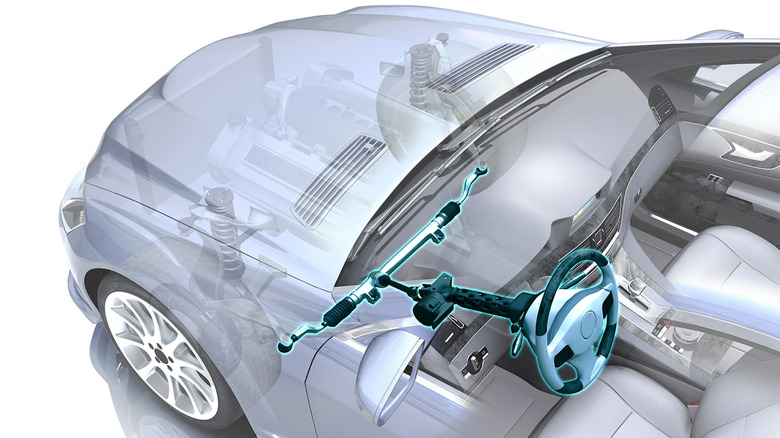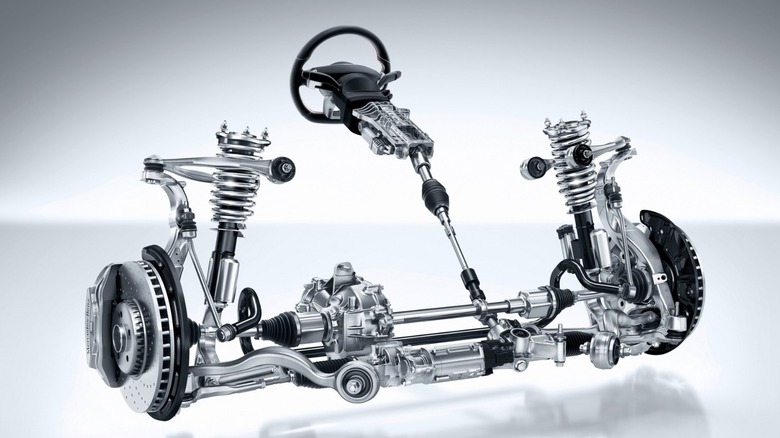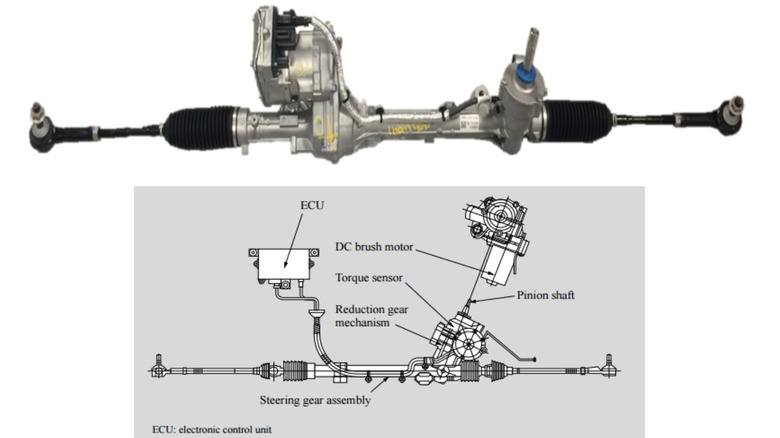What Does EPS Stand For? The Automotive Acronym Explained
Acronyms are common in the automotive space; some are pretty popular, like AWD for All-Wheel-Drive or ABS for Anti-lock Braking System. Others are quite obscure and may be unfamiliar to enthusiasts or professionals.
Take "EPS," for example, an acronym one might come across while browsing through the technical spec sheet of a vehicle. EPS is short for "Electric Power Steering." EPS is a modern alternative to traditional hydraulic power steering systems: Instead of a hydraulic piston filled with pressurized fluid, the electric power steering utilizes an electric motor to help turn the steering rack, assisting the driver in controlling the vehicle.
In earlier times, before driving aids became a core part of the overall driving experience, steering a vehicle was as analogue as it gets, with a rack and pinion system to keep the car pointed in the desired direction. Then there was the traditional hydraulic system, first introduced by Chrysler on a commercial scale with the 1951 Chrysler Imperial. The modern EPS arrived on scene about three decades later, and it was a major breakthrough in automotive handling technology.
Evolution and benefits of electric power steering
Power steering, whether electric or hydraulic, has been around for so long that it's hard to imagine a car without one today. As far as the electric variants are concerned, one of the first applications on a vehicle was on the planned 1989 Pontiac Fiero. The prototype electric power steering rack consisted of an electric pump that powered a rack and pinion system. Unfortunately, the Fiero flamed out in 1988 when GM ceased production and discontinued the model.
Incidentally, many of the first electric power steering systems were electro-hydraulic, with the electric motor driving a hydraulic pump. However, automakers soon figured out how to attach the motor to the steering rack or column, eliminating the need for a pump altogether.
One of the key benefits of EPS is improved fuel economy and overall better energy efficiency, which puts less strain on engine output. Hydraulic systems are constantly running, feeding off power from the engine even when the car is kept in a straight line. The motor in the EPS system, like the hydraulic steering system, still feeds off of the engine (though indirectly via the car battery), but it only draws power when needed — when the wheel is turned.
EPS systems have fewer components with a simpler mechanical structure, making them less prone to mechanical wear and tear. They also facilitate an easier integration with a wide variety of driver assistance aids like lane-keep assist and automated parking.
How does EPS work?
Principal components of the EPS system include an electric motor, a reduction gear, a torque sensor, steering angle sensor and several control modules. In most vehicles, the motor is mounted on the steering column. It can also be connected directly to the steering rack, a more expensive setup typically reserved for performance cars.
When the driver turns the wheel, the steering angle sensor instantly detects the rate of rotation. The torque sensor measures the pressure being applied to the steering. This information is then fed to the power steering control module, which then calculates the optimal steering support needed after factoring in other inputs like data from the traction control and stability control systems.
That said, the EPS is not a perfect system. Yes, it is less bulky than its hydraulic counterpart, but the reliance on electronic components tends to make the EPS more complex and vulnerable to issues, such as sensor or motor failures. However, the pros outweigh the cons, which is why EPS is quickly becoming a standard feature on new cars today.


